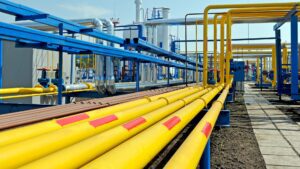
The number of bookings in Ukrainian hotels at the end of 2022 decreased by only 13% compared to pre-COVID 2019, despite large-scale attacks on Ukrainian cities by the aggressor country, Russia, according to a study by the Booking.com portal.
“2019 was the best year in Ukraine in terms of the number of both booked and lived nights. We recorded that starting from the third quarter of 2022, the decline in bookings decreased to 27% compared to 2019, while in the second the drop was 70%. And despite the huge number of attacks on our cities, we ended the fourth quarter with a drop of 13%. If it weren’t for the attacks of the aggressor, we might have approached the figure of 2019,” market team manager of the Ukrainian office of Booking.com Iryna Kulish said during the online conference of the Association of Hotels and Resorts of Ukraine on Tuesday.
According to the study, the number of nights spent in Ukrainian hotels in 2022 halved compared to 2021. At the same time, after the collapse in March 2022, the indicator began to grow already in April and in August almost reached the January level, the expert noted.
At the same time, the average cost of a room has not changed significantly: UAH 1,328 in 2021 and UAH 1,319 in 2022.
According to Booking.com, the most frequent stays for guests last year were two-six days (52%), about a third of visitors stayed for one day, 20% of customers stayed for seven days or more.
At the same time, the booking window in 2022 has been significantly reduced. Day-to-day or day-to-date bookings accounted for 35% of total bookings due to the difficulty of planning during the war. About 28% of bookings were made two-seven days before arrival, while 18% were made eight-20 days before arrival.
At the same time, the share of the most advanced bookings (more than 21 days), most often associated with summer holidays, decreased to 19%.
According to portal statistics, last year guests most often stayed in hotels (46%) and apartments (23%), while the share of hostels and apart-hotels was only 7% and 4% respectively.
According to Booking.com, a significant competitive advantage when choosing a location in Ukraine was the provision of information about the availability of a bomb shelter, autonomous power sources, uninterrupted Internet, water and heating.
The most popular destinations in 2022 were Lviv (19.4% of bookings), Kyiv (15.5%), Bukovel (8.7%), while a year earlier Kyiv (23.7%), Odesa (14.1%) and Lviv (11.3%) were in the lead. In general, the top bookings included mainly locations in the west of the country: Yaremche, Uzhgorod, Truskavets, Ivano-Frankivsk, and Chernivtsi. Previously, high rates of bookings were shown mainly by beach destinations, Kulish noted.

Operations of the European gas industry are realigning with the changing season, with the warming spring temperatures in Europe and declining prices on the spot market resulting in importers reducing off-take of Russian gas.
According to the data of Gas Transmission System Operator of Ukraine, nomination for April 26 is 56 million cubic meters, and bookings for April 25 totaled 68.4 million cubic meters.
Rising temperatures and seasonally declining gas consumption allow importers to return to the flexible optimization of booking volumes from suppliers depending on the cost. Gas imported under a month-ahead contract – Gazprom has about half of its exports pegged to this contract – in April is around $1,400 per thousand cubic meters. A day-ahead contract on the spot market is currently $1,050 per thousand cubic meters. Therefore, buyers are increasing their purchases on the spot market, and reducing off-take on record-breaking long-term contracts.
Gas actually flowing via the Yamal-Europe pipeline between Germany and Poland has been continuously pumping in reverse mode since April 7. On Tuesday, the reverse flow of gas from Germany to Poland has dropped 66.7% to 200,000 cubic meters per hour, according to data from the Gascade gas transport operator. Off-take of additional volumes of gas from the main European hubs instead of direct imports from the east is another factor in the current high gas prices in the European Union.
Wind farms provided an average of 17% of the electricity generation in the European Union last week from April 18 to 24, with the figure falling to 9.5% on Monday, according to data from the WindEurope association.
Europe has begun injecting gas into its underground gas storage (UGS) facilities. The current stock level is 31.57%, an increase of 0.33 percentage points over the past day. The current stockpile in the UGS facilities in Europe is 6.3 percentage points behind the five-year average. High prices for imported gas have restrained injection in April.
According to the decree of the Russian president, the government as of April has introduced a new procedure for paying for Russian gas supplies that stipulates the obligatory conversion of the contract currency into rubles through Gazprombank.